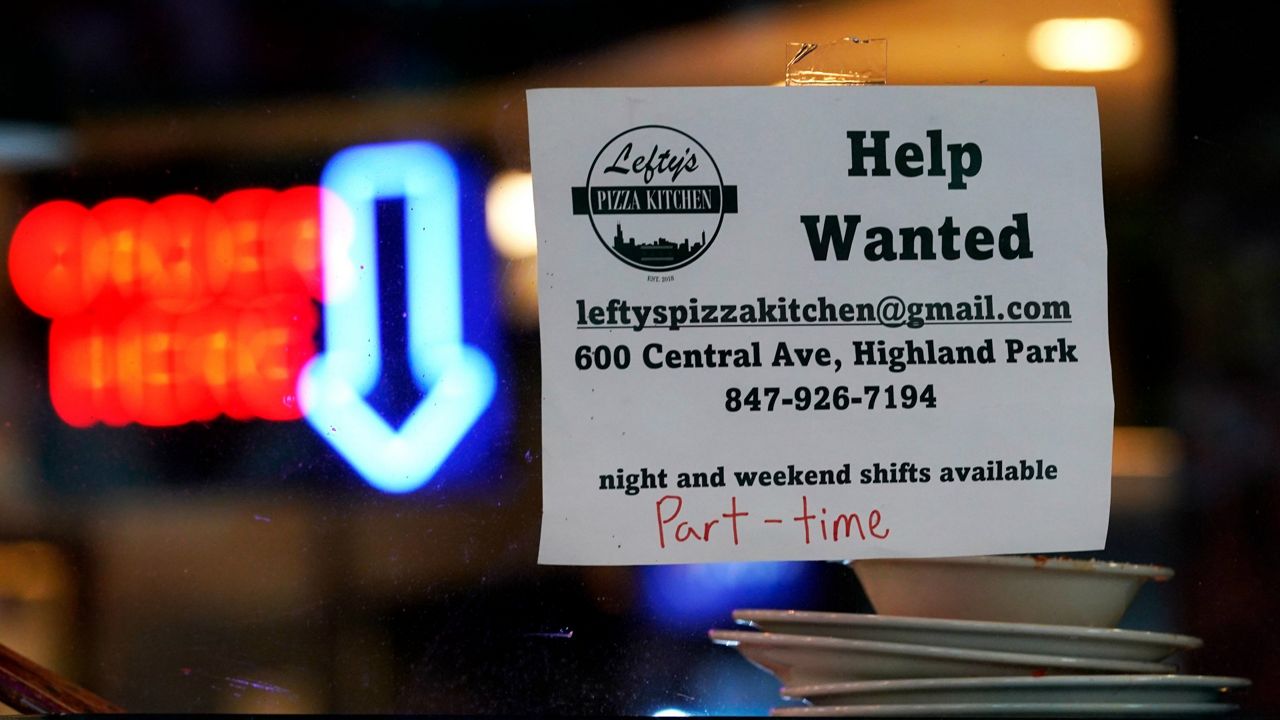Fewer Americans applied for jobless benefits last week, but the previous week's number was revised upward significantly, with claims breaching the 250,000 level in back-to-back weeks for the first time in more than eight months.
What You Need To Know
- Fewer Americans applied for jobless benefits last week, but the previous week's number was revised upward significantly, with claims breaching the 250,000 level in back-to-back weeks for the first time in more than eight months
- Applications for jobless aid for the week ending July 23 declined by 5,000 to 256,000 from the previous week's 261,000, the Labor Department reported Thursday
- The number of claims for the week of July 16 was revised upward by 10,000 from the previously estimated 251,000
- The total number of Americans collecting jobless benefits for the week ending July 16 fell by 25,000 from the previous week to 1,359,000
Applications for jobless aid for the week ending July 23 declined by 5,000 to 256,000 from the previous week's 261,000, the Labor Department reported Thursday. The number of claims for the week of July 16 was revised upward by 10,000 from the previously estimated 251,000.
First-time applications generally reflect layoffs.
The four-week average for claims, which smooths out some of the week-to-week volatility, rose by 6,250 from the previous week, to 249,500. That number is also at its highest level since November of last year.
The total number of Americans collecting jobless benefits for the week ending July 16 fell by 25,000 from the previous week, to 1,359,000. That figure has been near 50-year lows for months.
Earlier this month, the Labor Department reported that employers added 372,000 jobs in June, a surprisingly robust gain and similar to the pace of the previous two months. Economists had expected job growth to slow sharply last month given the broader signs of economic weakness.
The unemployment rate remained 3.6% for a fourth straight month, matching a near-50-year low that was reached before the pandemic struck in early 2020.
The government also reported earlier in July that U.S. employers advertised fewer jobs in May amid signs that the economy is weakening, though the overall demand for workers remained strong. There are nearly two job openings for every unemployed person.
The government also reported Thursday that the U.S. economy shrank 0.9% in the second quarter, the second straight quarterly contraction.
Consumer prices are still soaring though, up 9.1% in June compared with a year earlier, the biggest yearly increase since 1981, the government reported last week.
All of those figures paint a divergent picture of the post-pandemic economy: Inflation is hammering household budgets, forcing consumers to pull back on spending, and growth is weakening, heightening fears the economy could fall into recession.
In an effort to combat the worst inflation in more than four decades, the Federal Reserve raised its main borrowing rate by another three-quarters of a point on Wednesday. That follows last month's three-quarter point hike and a half-point increase in May.
Though the labor market is still strong, there have been some high-profile layoffs announced recently by Tesla, Netflix, Carvana, Redfin and Coinbase.
The number of Americans applying for unemployment benefits last week rose to the highest level in more than eight months in what may be a sign that the labor market is weakening.
Applications for jobless aid for the week ending July 16 rose by 7,000 to 251,000, up from the previous week's 244,000, the Labor Department reported Thursday. That's the most since Nov. 13, 2021 when 265,000 Americans applied for benefits.
Analysts surveyed by the data firm FactSet expected the number to come in at 242,000.
First-time applications generally reflect layoffs.
The four-week average for claims, which smooths out some of the week-to-week volatility, rose by 4,500 from the previous week, to 240,500.
The total number of Americans collecting jobless benefits for the week ending July 9 rose by 51,000 from the previous week, to 1,384,000. That figure has been near 50-year lows for months.



